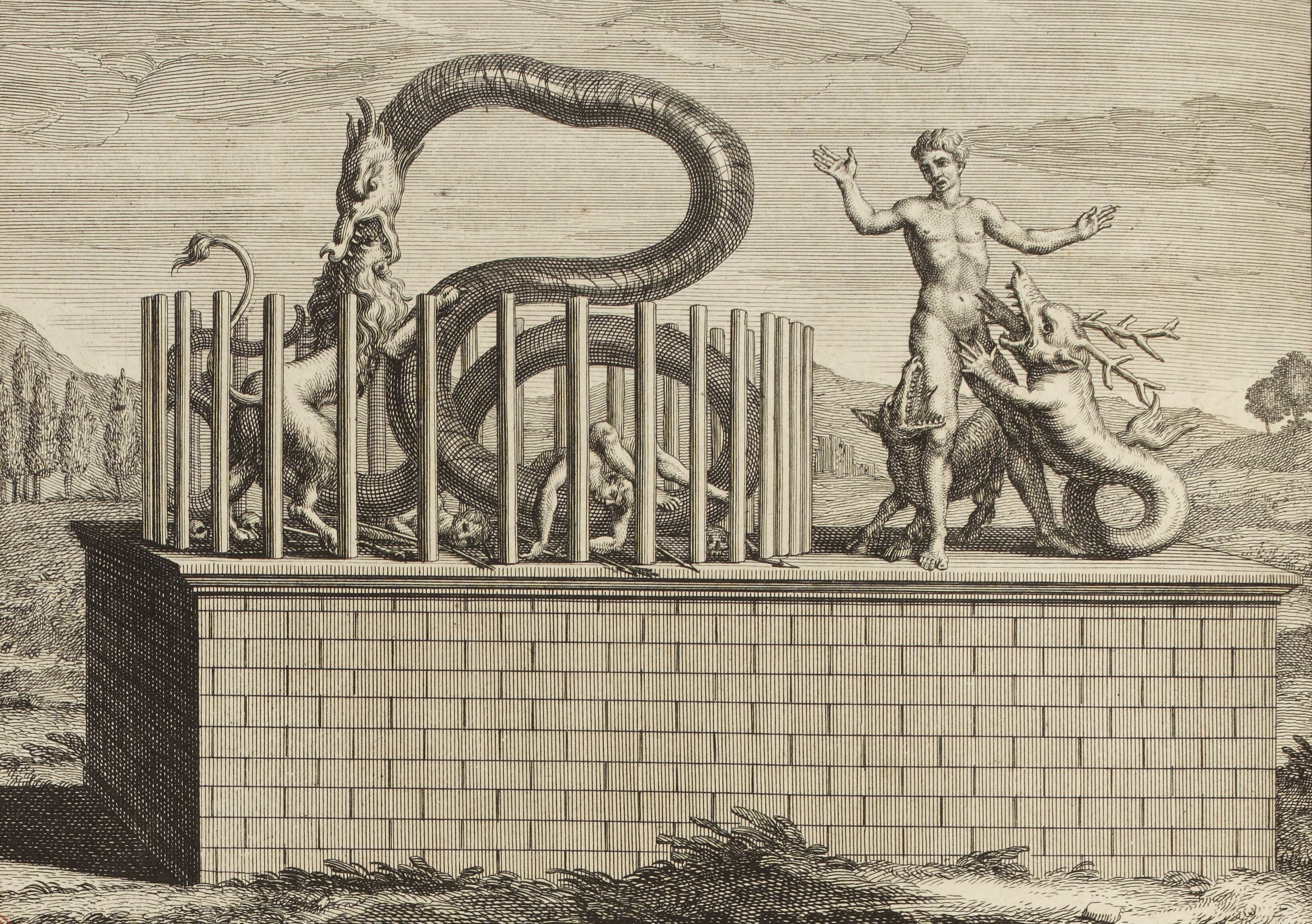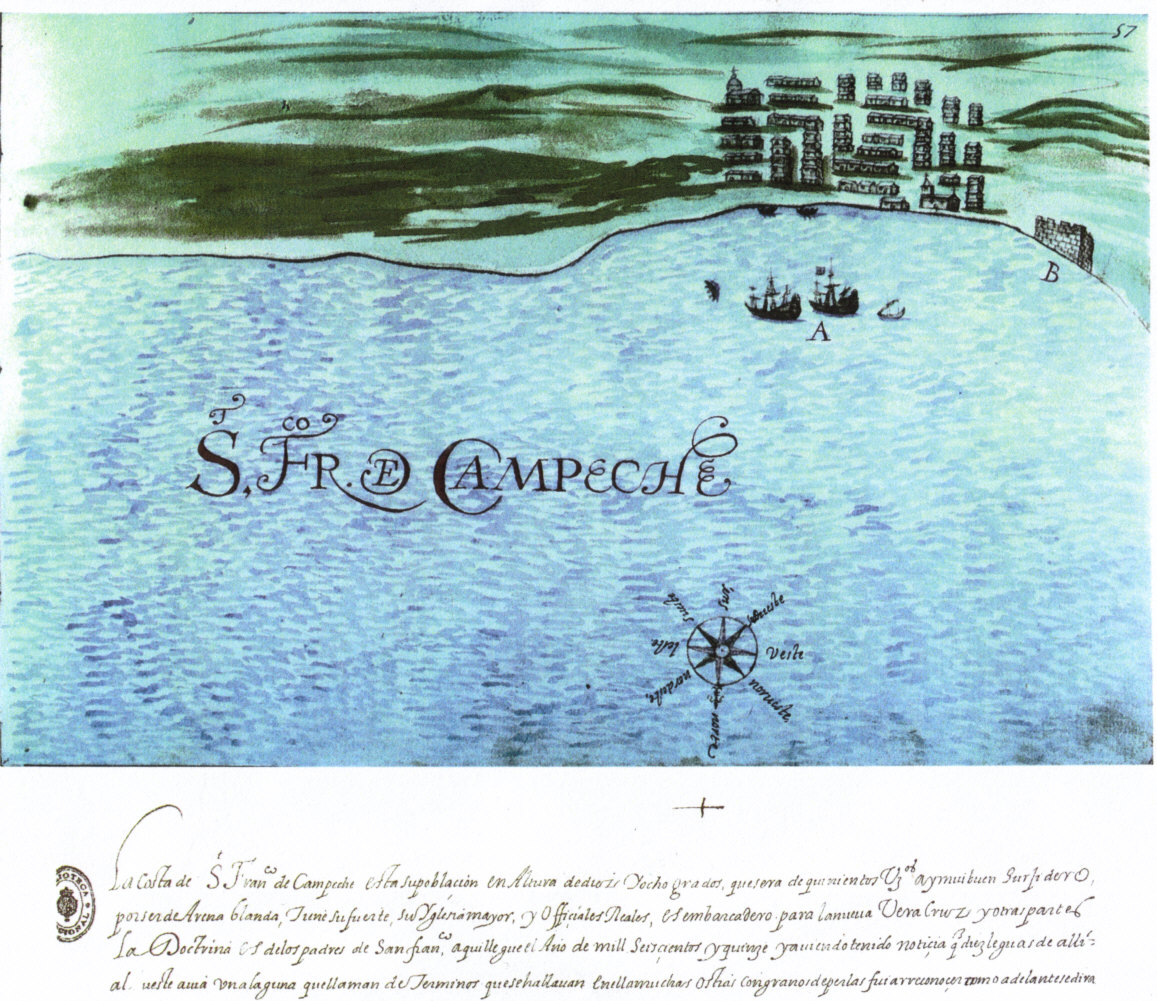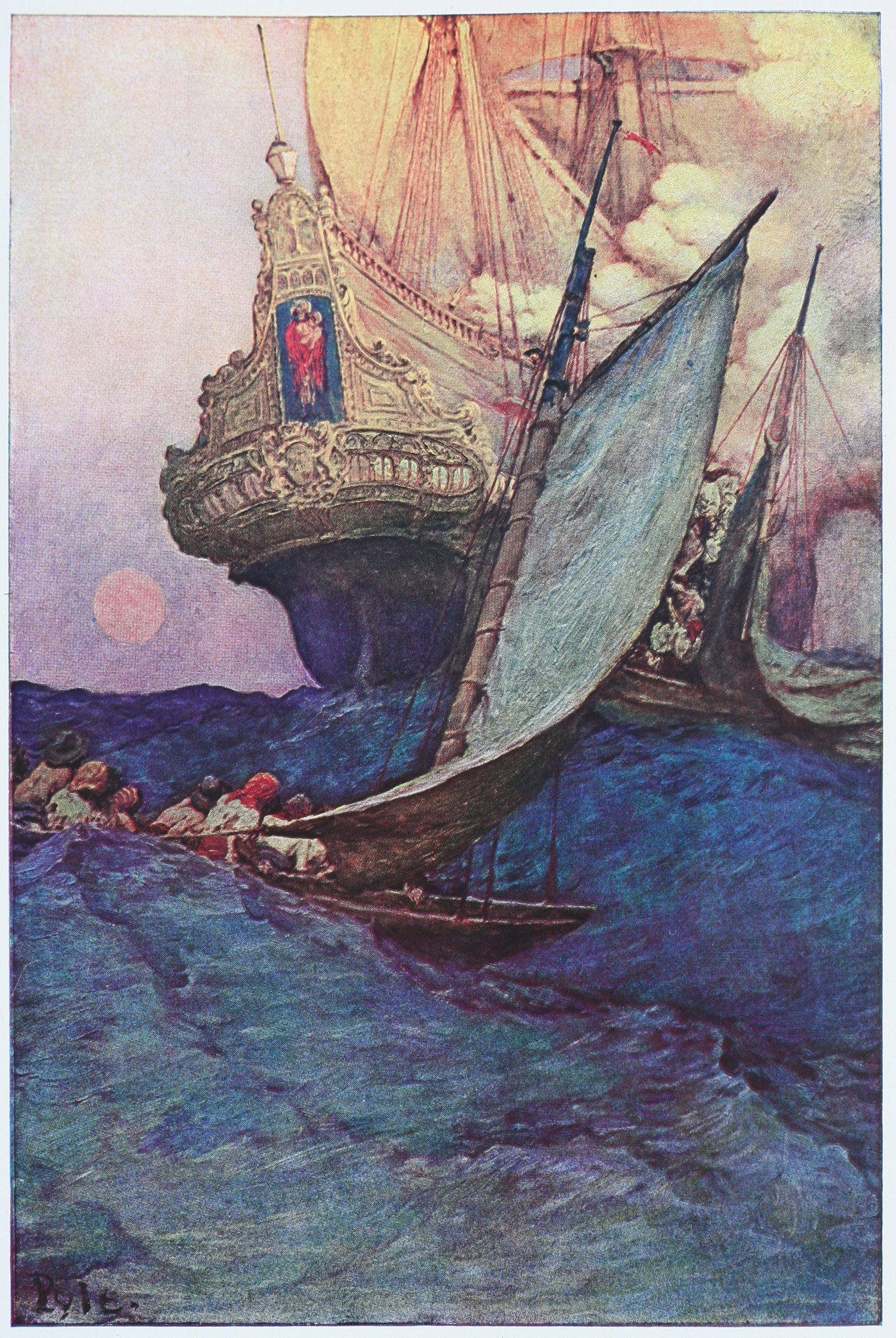|
Campeche (city)
San Francisco de Campeche (; yua, Ahk'ìin Pech, ), 19th c., also known simply as Campeche, is a city in Campeche Municipality in the Mexican state of Campeche, on the shore of the Bay of Campeche in the Gulf of Mexico. Both the seat of the municipality and the state's capital, the city had a population of 220,389 in the 2010 census, while the municipality had a population of 259,005. The city was founded in 1540 by Spanish conquistadores as San Francisco de Campeche atop the pre-existing Maya city of Can Pech. Little trace remains of the Pre-Columbian city. The city retains many of the old colonial Spanish city walls and fortifications which protected the city from pirates and buccaneers. The state of preservation and quality of its architecture earned it the status of a World Heritage Site in 1999. Campeche is (along with Quebec City) one of the only cities in North America with most of its historic old city walls intact. Originally, the Spaniards lived inside the walled c ... [...More Info...] [...Related Items...] OR: [Wikipedia] [Google] [Baidu] |
City
A city is a human settlement of notable size.Goodall, B. (1987) ''The Penguin Dictionary of Human Geography''. London: Penguin.Kuper, A. and Kuper, J., eds (1996) ''The Social Science Encyclopedia''. 2nd edition. London: Routledge. It can be defined as a permanent and densely settled place with administratively defined boundaries whose members work primarily on non-agricultural tasks. Cities generally have extensive systems for housing, transportation, sanitation, utilities, land use, production of goods, and communication. Their density facilitates interaction between people, government organisations and businesses, sometimes benefiting different parties in the process, such as improving efficiency of goods and service distribution. Historically, city-dwellers have been a small proportion of humanity overall, but following two centuries of unprecedented and rapid urbanization, more than half of the world population now lives in cities, which has had profound consequences for g ... [...More Info...] [...Related Items...] OR: [Wikipedia] [Google] [Baidu] |
Maya Civilization
The Maya civilization () of the Mesoamerican people is known by its ancient temples and glyphs. Its Maya script is the most sophisticated and highly developed writing system in the pre-Columbian Americas. It is also noted for its art, architecture, mathematics, calendar, and astronomical system. The Maya civilization developed in the Maya Region, an area that today comprises southeastern Mexico, all of Guatemala and Belize, and the western portions of Honduras and El Salvador. It includes the northern lowlands of the Yucatán Peninsula and the highlands of the Sierra Madre, the Mexican state of Chiapas, southern Guatemala, El Salvador, and the southern lowlands of the Pacific littoral plain. Today, their descendants, known collectively as the Maya, number well over 6 million individuals, speak more than twenty-eight surviving Mayan languages, and reside in nearly the same area as their ancestors. The Archaic period, before 2000 BC, saw the first developments in agricul ... [...More Info...] [...Related Items...] OR: [Wikipedia] [Google] [Baidu] |
Yucatán Peninsula
The Yucatán Peninsula (, also , ; es, Península de Yucatán ) is a large peninsula in southeastern Mexico and adjacent portions of Belize and Guatemala. The peninsula extends towards the northeast, separating the Gulf of Mexico to the north and west of the peninsula from the Caribbean Sea to the east. The Yucatán Channel, between the northeastern corner of the peninsula and Cuba, connects the two bodies of water. The peninsula is approximately in area. It has low relief, and is almost entirely composed of porous limestone. The peninsula lies east of the Isthmus of Tehuantepec, the narrowest point in Mexico separating the Atlantic Ocean, including the Gulf of Mexico and Caribbean Sea, from the Pacific Ocean. Some consider the isthmus to be the geographic boundary between Central America and the rest of North America, placing the peninsula in Central America. Politically all of Mexico, including the Yucatán, is generally considered part of North America, while Guatemala an ... [...More Info...] [...Related Items...] OR: [Wikipedia] [Google] [Baidu] |
Hernández De Córdoba Expedition
The Hernández de Córdoba expedition was a 1517 Spanish maritime expedition to the Yucatán Peninsula led by Francisco Hernández de Córdoba (Yucatán conquistador), Francisco Hernández de Córdoba. The enterprise proved disastrous and little profitable for the Spaniards, with half of them fatally wounded, the rest grievously injured, and all in all, very little gold to show for their troubles. It was nonetheless deemed an immediate and exciting success, having brought back news of vast lands inhabited by a rich and civilised people, namely, the Maya civilization, Maya civilisation. The expedition is popularly credited as the first non-Amerindian contact with the Maya, and first non-Amerindian discovery of the Peninsula, though both these achievements are disputed in scholarly literature. It is deemed the opening campaign of the Spanish conquest of the Maya, and one of the precursor expeditions which led to the Spanish conquest of the Aztec Empire. Prelude By the m ... [...More Info...] [...Related Items...] OR: [Wikipedia] [Google] [Baidu] |
Sack Of Campeche (1663)
The Sack of Campeche was a 1663 raid by pirates led by Christopher Myngs and Edward Mansvelt which became a model for later coastal pirate raids of the buccaneering era. Background Having successfully raided Santiago de Cuba in 1662, Myngs announced that his next target would be the heavily fortified coastal town, Campeche, in what is now southern Mexico. Pirate captains from across the Caribbean volunteered their services, and Myngs amassed the largest pirate fleet ever seen with 14 ships and 1400 pirates. The primarily English fleet was subsequently joined by four French ships and three Dutch privateer ships for a total of more than 20 vessels. Leading the fleet was Myngs' flagship HMS ''Centurion'' and the smaller vice-flagship the ''Griffin''. The fleet included already-well-known pirates Mansvelt, Henry Morgan and Abraham Blauvelt. It is likely it included other younger sailors who would later captain pirate vessels of their own and replicate Myngs' tactics. They left Port ... [...More Info...] [...Related Items...] OR: [Wikipedia] [Google] [Baidu] |
Jan Janszoon Van Hoorn's Expedition Of 1633
Jan Janszoon van Hoorn's expedition of 1633 was a privateering voyage against colonial Honduras and Yucatan. Commissioned by the Dutch West India Company, it resulted in various casualties, the sacking of Campeachy, and the sacking and burning of Trujillo, leaving this latter ''villa'' defenceless for the rest of the 1630s. Prelude Sometime after Piet Heyn's 1628 capture of the silver fleet, this admiral advised the Heren (the WIC's governing body) to commission a raid of Trujillo. They first acted on Heyn's advice on 4 June 1630, instructing Jan Booneter and Adriaen Pater to surprise the silver fleet at port in Trujillo, if they found this feasible. Said project proving abortive, the Heren next (14 June 1632) instructed Galeyn von Stapels to chart the coast and waters of the Bay of Campeachy, the Yucatan Peninsula, and the Bay of Honduras. Later that year, on 2 November, the Heren instructed Jan van Hoorn to sail for the Bay of Honduras, where ... [...More Info...] [...Related Items...] OR: [Wikipedia] [Google] [Baidu] |
Francisco De Montejo
Francisco de Montejo (; 1479 – 1553) was a Spanish conquistador in Mexico and Central America. Early years Francisco de Montejo was born about 1473 to a family of lesser Spanish nobility in Salamanca, Spain. He never documented his parentage during his lifetime but his father was probably Juan de Montejo. His mother is unknown but her surname may have been Téllez. He had a brother, Juan, who served with him in the New World and a sister, Maria, whose son Francisco de Montejo would become an important conquistador in Yucatan. In 1513 Montejo joined an expedition being organized in Seville under the leadership of Pedrarias Davila who had received a royal appointment to govern Castilla de Oro, a new Spanish colony in Central America. Montejo was sent on ahead to Santo Domingo to recruit additional men for the colony. Later, Pedrarius sent him on an unsuccessful expedition to the region that would later become Nueva Granada. Montejo became disillusioned with opportunities und ... [...More Info...] [...Related Items...] OR: [Wikipedia] [Google] [Baidu] |
Maya Peoples
The Maya peoples () are an ethnolinguistic group of Indigenous peoples of the Americas, indigenous peoples of Mesoamerica. The ancient Maya civilization was formed by members of this group, and today's Maya are generally descended from people who lived within that historical region. Today they inhabit southern Mexico, Guatemala, Belize, El Salvador, and Honduras. "Maya" is a modern collective term for the peoples of the region, however, the term was not historically used by the indigenous populations themselves. There was no common sense of identity or political unity among the distinct populations, societies and ethnic groups because they each had their own particular traditions, cultures and historical identity. It is estimated that seven million Maya were living in this area at the start of the 21st century. Guatemala, southern Mexico and the Yucatán Peninsula, Belize, El Salvador, and western Honduras have managed to maintain numerous remnants of their ancient cultural her ... [...More Info...] [...Related Items...] OR: [Wikipedia] [Google] [Baidu] |
Quebec City
Quebec City ( or ; french: Ville de Québec), officially Québec (), is the capital city of the Provinces and territories of Canada, Canadian province of Quebec. As of July 2021, the city had a population of 549,459, and the Communauté métropolitaine de Québec, metropolitan area had a population of 839,311. It is the eleventhList of the largest municipalities in Canada by population, -largest city and the seventhList of census metropolitan areas and agglomerations in Canada, -largest metropolitan area in Canada. It is also the List of towns in Quebec, second-largest city in the province after Montreal. It has a humid continental climate with warm summers coupled with cold and snowy winters. The Algonquian people had originally named the area , an Algonquin language, AlgonquinThe Algonquin language is a distinct language of the Algonquian languages, Algonquian language family, and is not a misspelling. word meaning "where the river narrows", because the Saint Lawrence River na ... [...More Info...] [...Related Items...] OR: [Wikipedia] [Google] [Baidu] |
World Heritage Site
A World Heritage Site is a landmark or area with legal protection by an international convention administered by the United Nations Educational, Scientific and Cultural Organization (UNESCO). World Heritage Sites are designated by UNESCO for having cultural, historical, scientific or other form of significance. The sites are judged to contain " cultural and natural heritage around the world considered to be of outstanding value to humanity". To be selected, a World Heritage Site must be a somehow unique landmark which is geographically and historically identifiable and has special cultural or physical significance. For example, World Heritage Sites might be ancient ruins or historical structures, buildings, cities, deserts, forests, islands, lakes, monuments, mountains, or wilderness areas. A World Heritage Site may signify a remarkable accomplishment of humanity, and serve as evidence of our intellectual history on the planet, or it might be a place of great natural beauty. A ... [...More Info...] [...Related Items...] OR: [Wikipedia] [Google] [Baidu] |
Buccaneer
Buccaneers were a kind of privateers or free sailors particular to the Caribbean Sea during the 17th and 18th centuries. First established on northern Hispaniola as early as 1625, their heyday was from Stuart Restoration, the Restoration in 1660 until about 1688, during a time when governments were not strong enough and did not consistently attempt to suppress them. Originally the name applied to the landless hunters of wild boars and cattle in the largely uninhabited areas of Tortuga (Haiti), Tortuga and Hispaniola. The meat they caught was smoked over a slow fire in little huts the French called ''boucans'' to make ''viande boucanée'' – ''jerked meat'' or ''jerky'' – which they sold to the French corsairs, corsairs who preyed on the (largely Spanish) shipping and settlements of the Caribbean. Eventually the term was applied to the corsairs and (later) privateers themselves, also known as the Brethren of the Coast. Though corsairs, also known as ''filibusters'' or ''freeb ... [...More Info...] [...Related Items...] OR: [Wikipedia] [Google] [Baidu] |









